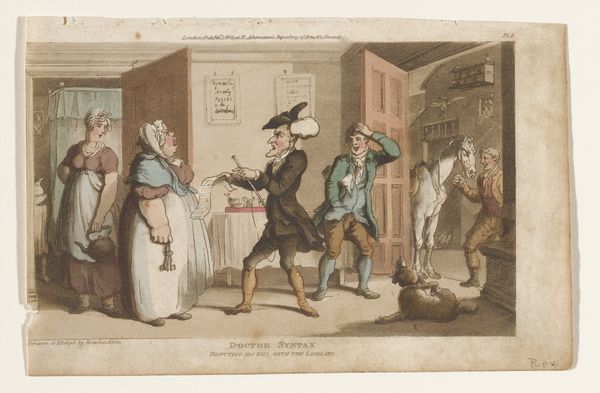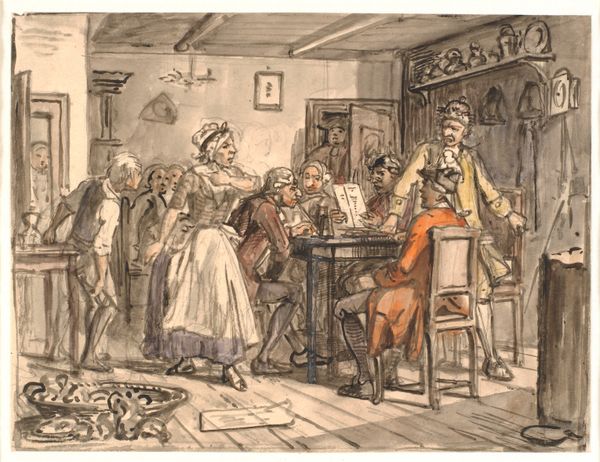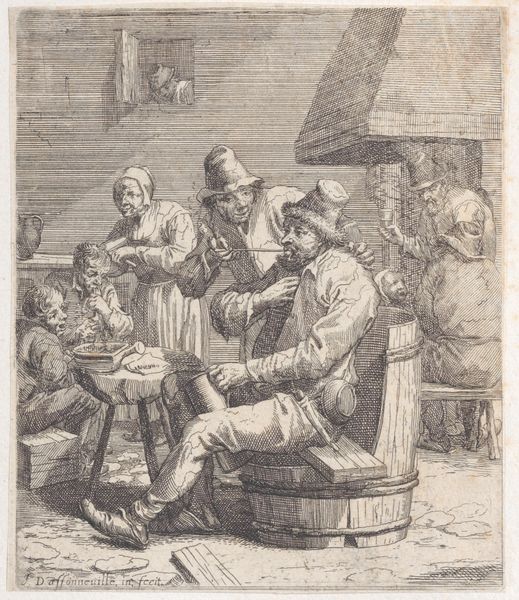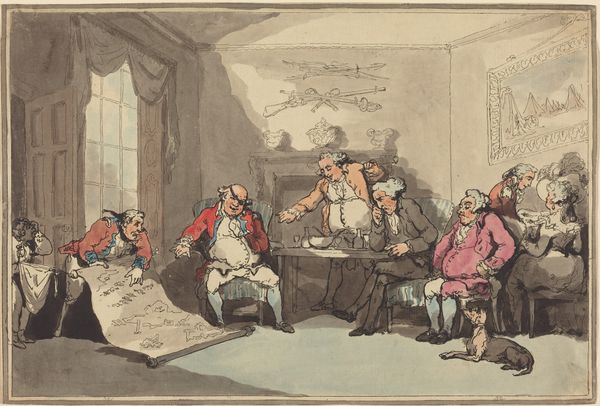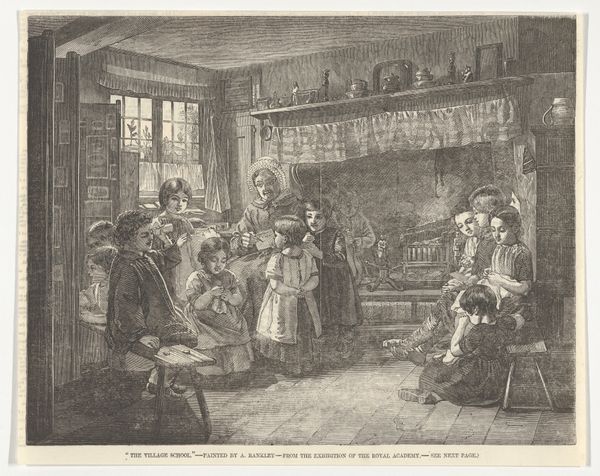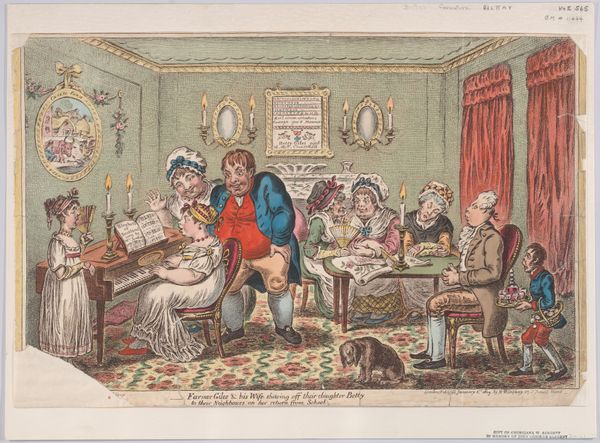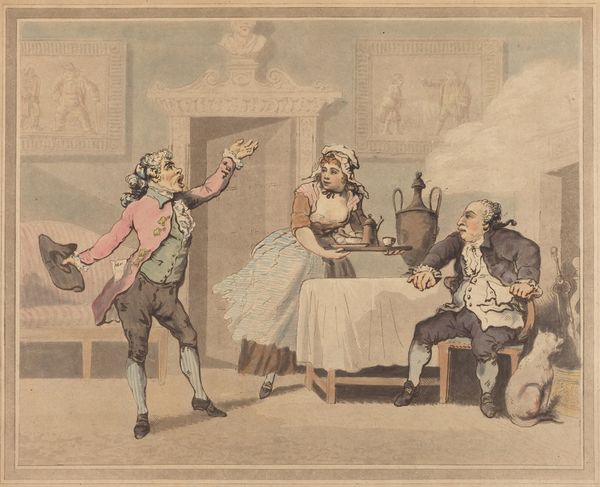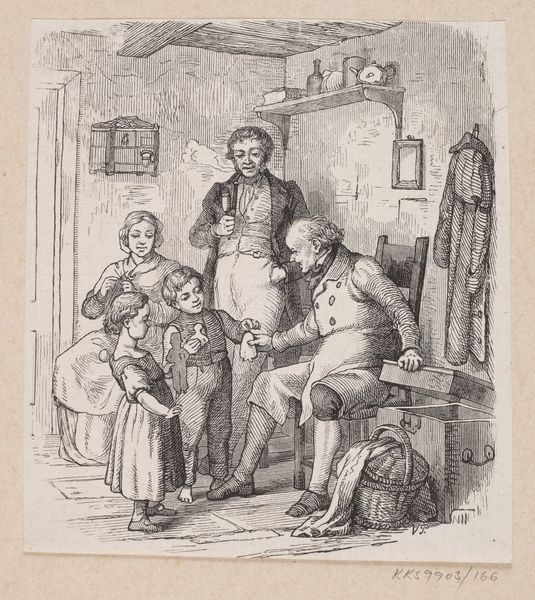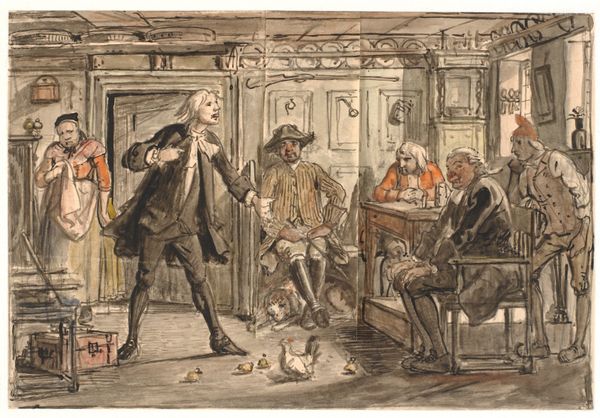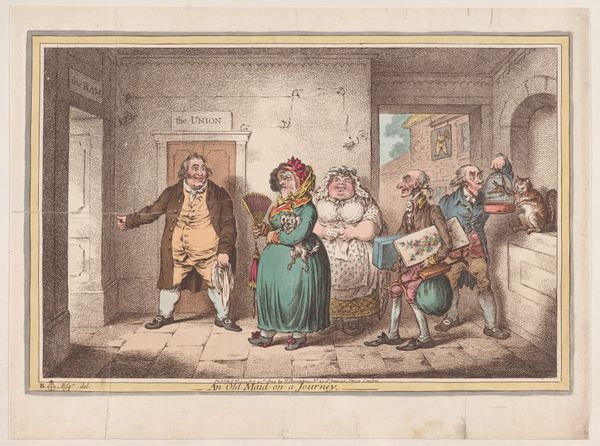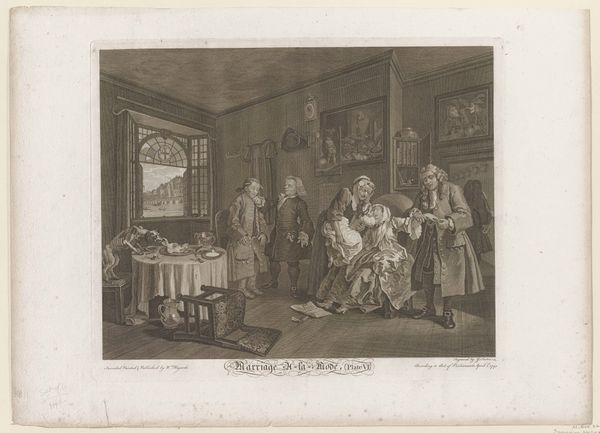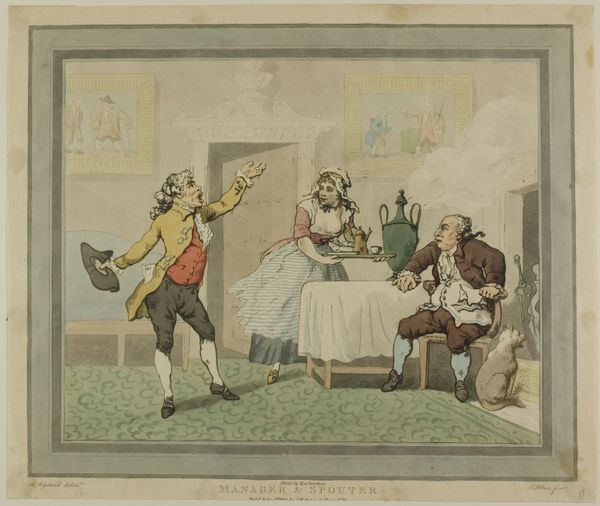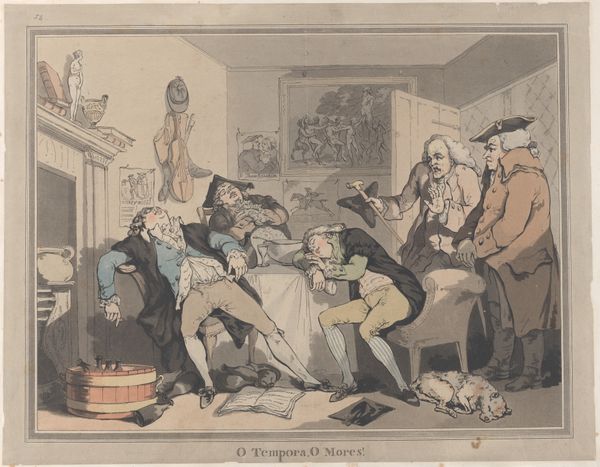
Collegium Politicum. From Ludvig Holberg’s The Political Tinker, Act I, Scene 2. 1810 - 1873
0:00
0:00
drawing, watercolor
#
portrait
#
drawing
#
narrative-art
#
figuration
#
watercolor
#
intimism
#
romanticism
#
genre-painting
Dimensions: 147 mm (height) x 163 mm (width) (bladmaal)
Curator: This drawing, rendered in watercolor, offers a glimpse into the theatrical world that captivated Wilhelm Marstrand. It's titled "Collegium Politicum. From Ludvig Holberg’s The Political Tinker, Act I, Scene 2." likely completed between 1810 and 1873. Editor: What strikes me is the central figure, this imposing man, dramatically lit, dominating the scene. It’s as if the entire composition hinges on his gesticulating hand. Curator: Indeed. Notice how Marstrand uses light and shadow to carve out the forms, the corpulent figure’s assertive pose contrasting with the figures in the background, observing him passively. Editor: Those background figures grouped by the window are visually framed in that dark doorway. This calls to mind the watchful chorus of witnesses present in many ancient Greek dramas, where characters bear witness to unfolding tragedy. The angry wife to the left even assumes a posture of defiance reminiscent of those mythical characters. Curator: An astute observation. The narrative implied by the scene benefits from this visual parallel, as does its immediate readability as domestic quarrel. This contrast is reinforced by the woman’s clothing itself; notice how the simple shapes in her costume give way to complexity with the design on the skirt. Editor: To me, the prominence of the clock and the ale mugs serve as silent reminders of time and indulgence, two factors often at play in comedies of this sort. What strikes you most, structurally speaking? Curator: The somewhat shallow pictorial space forces the action forward, engaging the viewer more directly. This also enhances the work’s sense of compression and potential energy; the artist successfully built the work to be bursting at its seams, which supports an analysis centered around formal expression, and not simply literary associations. Editor: A necessary reminder; so often we imbue paintings with so much iconographic information that we miss their basic construction, how lines, color, and composition communicate and mean irrespective of story or historical content. Thanks to you, now when I see a painted or sculpted human figure, my attention is increasingly split between “what does that mean,” and, more importantly, "what is that." Curator: Thank you, that's also helped clarify its impact for me.
Comments
No comments
Be the first to comment and join the conversation on the ultimate creative platform.
